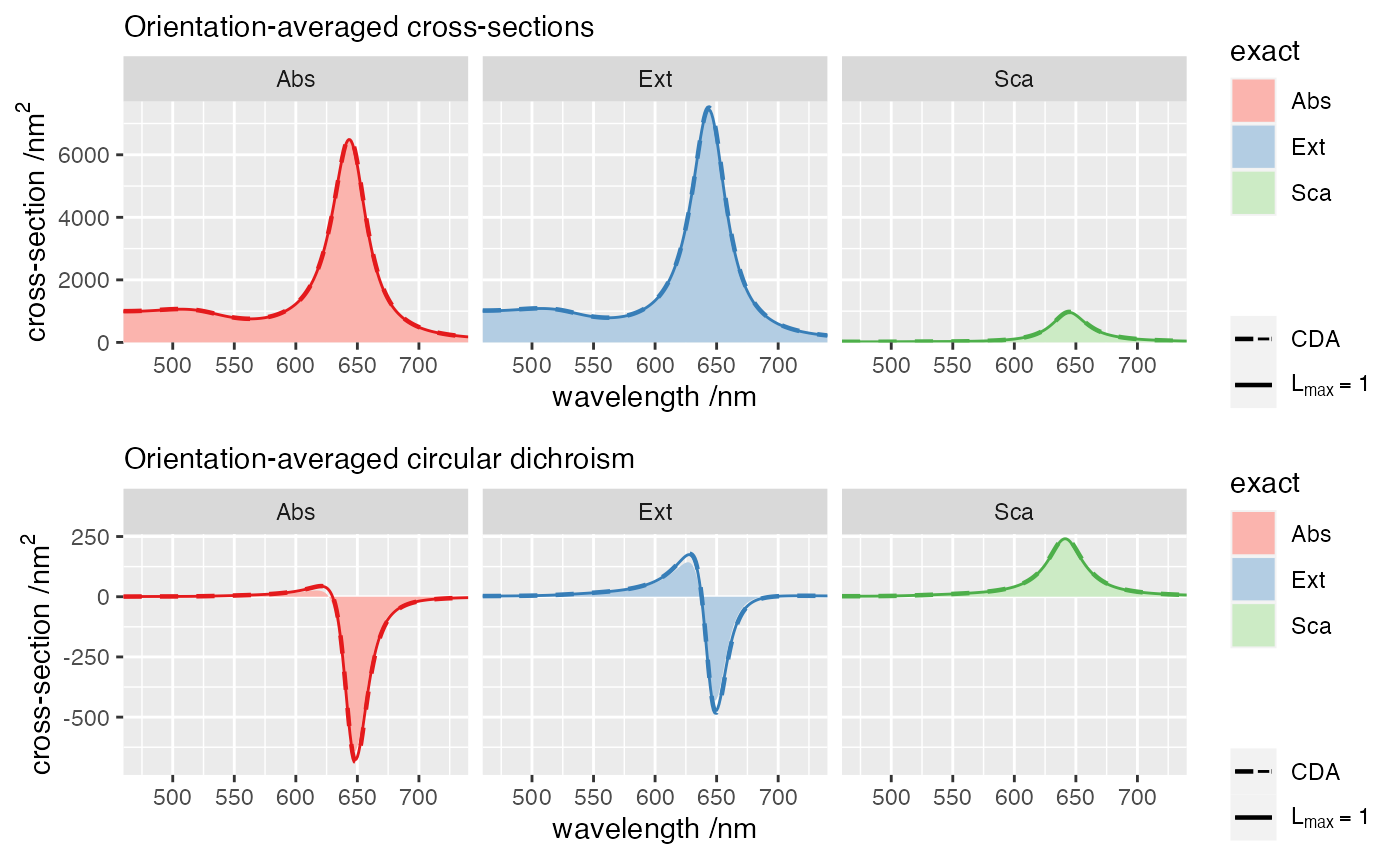Circular dichroism for a fingers crossed dimer of gold nanorods
05 December, 2023
Source:vignettes/1003_cda/1003_cda.Rmd
1003_cda.RmdObjective
This example compares the results of TERMS with a coupled-dipole approximation for the far-field properties of a chiral dimer of Au spheroids.
This TERMS simulation uses the following input file
ModeAndScheme 2 3
MultipoleCutoff 5
Wavelength 400 800 400
Medium 1.7689 # careful: be consistent with external T-matrix
TmatrixFiles 1
"tmat_Au10x25_Nmax3.tmat"
OutputFormat HDF5 cross_sections
# dimer, dihedral pi/4
Scatterers 2
TF1 0 -40 0.0 25 0.0 0.0 0.0 2.5
TF1 0 40 0.0 25 0.0 0.7853982 0 2.5as well as a second simulation with only the electric dipole term,
ModeAndScheme 2 3
MultipoleCutoff 5
Wavelength 400 800 400
Medium 1.7689 # careful: be consistent with external T-matrix
TmatrixFiles 1
"tmat_Au10x25_Nmax3.tmat"
MultipoleSelections 1
MM2:1_EM2:1_ME2:1_EE1:1 blocks
OutputFormat HDF5 cross_sections_dip
# dimer, dihedral pi/4
Scatterers 2
TF1_S1 0 -40 0.0 25 0.0 0.0 0.0 2.5
TF1_S1 0 40 0.0 25 0.0 0.7853982 0 2.5The T-matrix file was previously created with SMARTIES using these parameters
clearvars
wavelength = 400:1:800;
epsilon=epsAu(wavelength);
medium=1.33;
% stParams.a=20; stParams.c=50;
% stParams.a=10; stParams.c=20;
stParams.a=10; stParams.c=25;
stParams.N=3; stParams.nNbTheta=40;
stOptions.bGetR = false;
stOptions.Delta = 0;
stOptions.NB = 0;The coupled-dipole simulations were performed with a in-house
implementation in Matlab, which we are in the process of documenting and
porting to the Julia language at CoupledDipole.jl.
